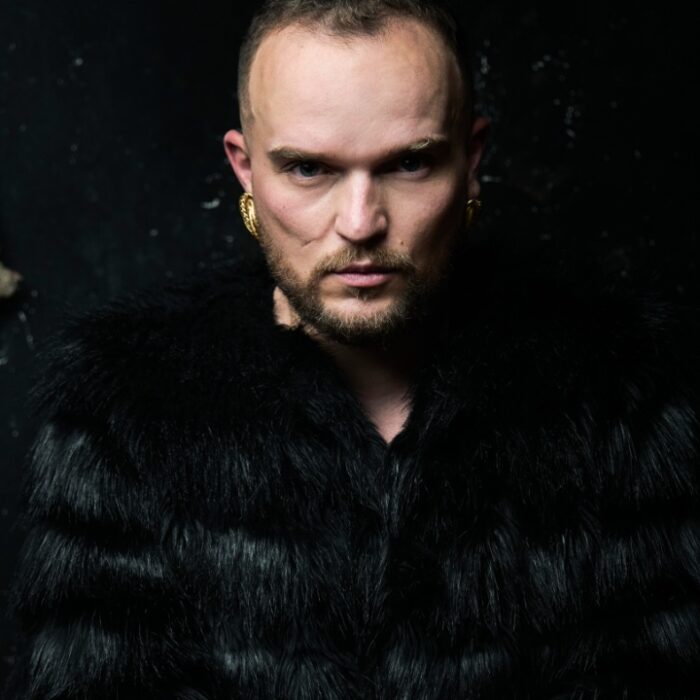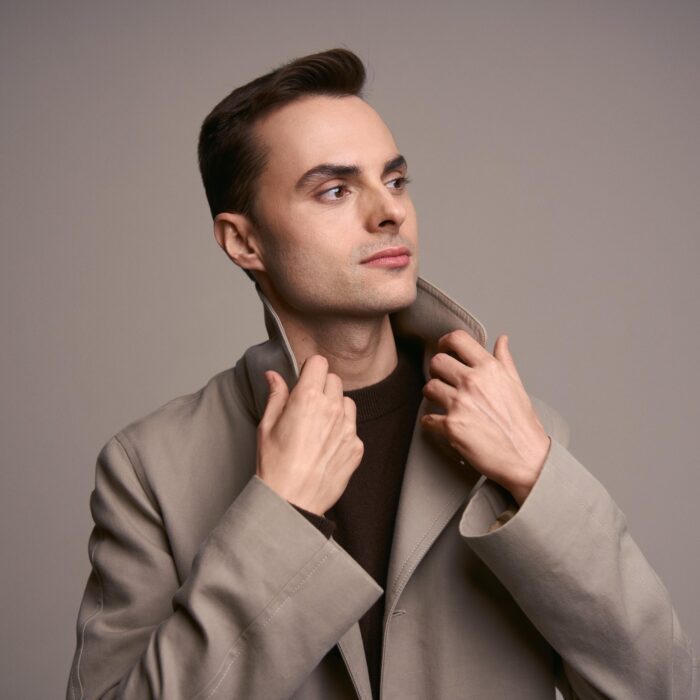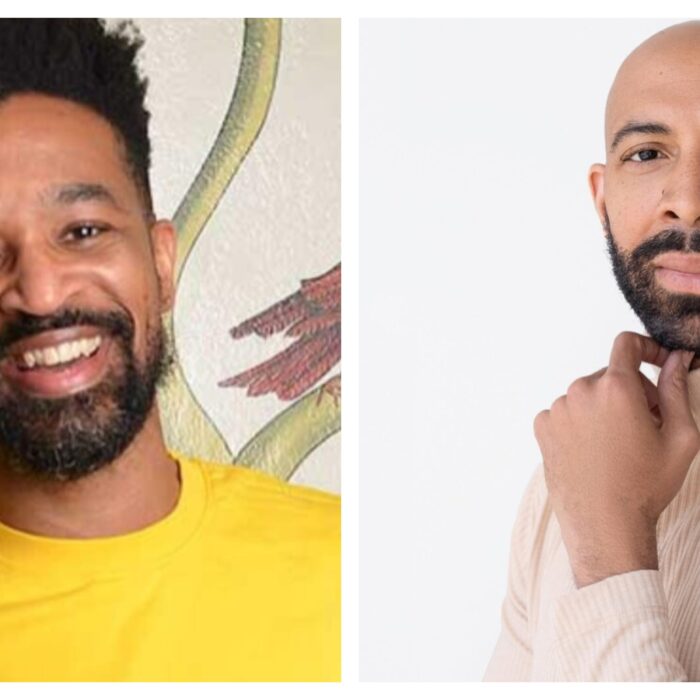Q & A: Conductor P on Remaining Anonymous, ‘2H32,’ & What Opera Means in Today’s World
By John VandevertCan an artistically-inclined YouTube channel be considered an ‘opera?’ More fundamentally, is operatic theater limited to what happens on the stage, or can it reside within the digital spaces of the internet? In the days where technology has liberated art, and where virtual art as well as artificially-generated art have become hot topics of discussion, it is quickly becoming apparent that we must begin to accept the reality that even opera is no longer bound by the traditional three-dimensions by which it first came into existence.
Now, as many modern composers including Glass, Dove, and Reich have demonstrated, the idea of a technologically mediated–or just downright ‘digital’–opera is no longer a foreign concept. But what happens when the most recognizable aspects of operatic theater are deconstructed and inverted into their conceptual ideals? And what would happen when the idea of the operatic form itself is dissolved and rendered submissive to the artistic mission of the ‘composer?’ In my written interview with multi-media artist ‘Conductor P’–an alias for their undisclosed name, which does start with the letter ‘P’–I explore their now six-year-long project entitled “2H32,” an online, horror-based, YouTube channel based around themes such as madness, fear, trauma, psychological turmoil, romanticized surrealism, gore, terror, suspense, and the revelations and self-discoveries made at the nexus of beauty and pain which so many of us are uncomfortably familiar with. Using musical terms in the title of the videos and the operatic form as its theoretical structure, 2H32 destroys the operatic standard, creating something much more sensual, visceral, and perhaps even ‘operatic.’ In this current era of ‘post-post-modernism’ and ‘post-irony,’ the borders are irrevocably blurred between what is real and what is more-than-real, between what is abstract and what is definite, between what is opera and what is more-than-opera. In such an environment, the notion of ‘operatic’ must be expanded.
“What is opera and the quality of ‘operatic’ to you?” Lead by this overarching question, in every interview I examine a project or work through the lens of figuring out just what it means to do opera in the 21st century. No longer bound by antiquated regulations, artists use ‘opera’ to make a point. My goal is to figure out what that ‘point’ is.
[To honor how the answers of “Conductor P” were provided upon request, their responses will be in red, stylized text]
OperaWire: Who is “Conductor P” and how would you describe yourself?
Conductor P: I am an independent artist who uses unusual formats and content as storytelling tools to convey my art. My work focuses primarily on terror, change, beauty, and uneasiness. Before this interview, you had imagined me a certain way; maybe that image you had of me will change after this–or not. It’s all up to your interpretation of the answers I’ll provide you, just like with my body of work.
OW: Where did the name ‘Conductor P’ come from?
CP: A conductor is a person who directs the performance of an orchestra or choir. But in its basic definition, a conductor is a person, or thing, that requires or leads. Considering the nature of my work, I simply found the title fitting. 'P' is merely the first letter of my name, so I wanted something fundamental and practical. 'Conductor P' is the answer to the public’s need for attribution when it comes to art; it functions as an anchor to my body of work in the field of horror. It’s also my response to copycats and impersonators on social media.
OW: Please describe your education and how you ended up in the audio-visual arts.
CP: I graduated top student from a rigorous private high school with a [focus on the] sciences, and then earned a bachelor’s degree in liberal arts at a local university. As a student, I was highly competitive; I needed to be the best in every class. Although I excelled in this academic setting, deep down I didn’t feel motivated by what I was studying–it simply satisfied my need for competition and success. Although I’ve never taken any formal filmmaking or art classes, I’ve always felt attracted to the art world; art cannot be constrained to any set of rules–there’s no clear paths to success and everything is up for interpretation. I first started doing photography as a hobby, then went on to learn how to draw and paint on my own, and eventually started experimenting with video production. I just loved the creative liberty that came with shaping and distorting anything I wanted in order to create something brand new by using and mixing different media. Although you and your readers know only the work that is attached to my 'Conductor P' alias, I also have an extensive portfolio in urban photography and portraits. My true passion, however, is still multimedia horror.
OW: You’ve noted that your ultimate desire is to “shape and inspire a new wave of independent artists & creators online.” Where did this come from, and how does this mission shape your work?
CP: Art drives inspiration and inspiration drives art; nothing beats the feeling of stumbling upon something new and interesting when you least expect it. Nowadays, social media and video streaming platforms make it possible for practically anyone to share with the world productions of their own, whether small or big. Over the last decade, we’ve seen an explosion of new, and interesting, forms of storytelling and works of art–shared via social media–by artists of all backgrounds and means. I want to add to that new wave with my "2h32" YouTube series. Through my work, I want to remind everyone that there are no set rules when it comes to storytelling. For instance, I make use of dates, timestamps, search tags and video format, to mention but a few, in order to present an unconventional story. Ultimately, I want to see how my work can inspire others to do the same and impress the rest of the world, myself included, with something bold and new.
OW: What is your personal and creative relationship to music?
CP: Music has always been part of my creative process. I listen to a wide variety of music genres: metal, rap, electronic, rock, pop, classical: all of which have been used one way or another as inspiration while working. Music–or even the absence of it–has the ability to completely change the tone and meaning of a scene, as it adds a whole new dimension and complexity to any work of art. It can turn a simple shot into something eerie and unsettling, or create a sense of awe in a scene that would otherwise be considered quite mundane. Essentially music is, at its core, the blood of my work–it flows through everything and allows the formless to take form.
OW: Could you explain why you’ve chosen to stay anonymous and how this decision was made?
CP: At first, "2h32" was to be a completely anonymous work; no alias, no creator to trace back to. I wanted my work to be appreciated for what it was. I feel that in a lot of cases people are more attracted to the creator than the creation, leaving the latter under–or over–appreciated. However, I soon realized that this led to another problem, which I felt was as much damaging to my work. Namely, copycats and impersonators. So I opted for the best of both worlds, creating an official anonymous persona on social media to have [some sort] of control over how my work was being used.
Also, like I said earlier, this alias now serves as an anchor to my body of work, under which people can find other of my horror-related works. I once worked for an industry in which looks are everything; your value and success was 95 percent based on how your face and body looked. At first, the dopamine from all the attention was quite enjoyable, until you realize that aside from your looks, nothing else much mattered to the people I worked for. By being anonymous, I want to give my artistic voice all the power and attention it deserves.
OW: What is the concept of 2H32 and what are you trying to achieve?
CP: At its core, my "2H32" project is an artistic exercise in constraints/limits,
both in form and content–fixed duration, fixed dates, fixed format, practically
no dialogs/on-screen writing, non-linear story, ever-changing filming styles.
I’ve always worked best under harsh constraints, as they force me to think
'outside the box.'
Needless to say, all these constraints have caused a good amount of stress on me
and have eventually led to a slower pace in the progression of my work.
Even so, I feel I succeeded in creating something unique and interesting that will
leave my audience captivated and wanting for more.In short, "2H32" is a complex narrative puzzle depicting a slow descent into horror and madness, presented as an unconventional contemporary opera.
OW: How did you first think about and begin this project?
CP: Growing up, I was a huge horror movie fan; whether good, bad, less known, big blockbusters, alternative, high budget, low budget. Naturally, creating my own horror production had always been a project at the back of my head since I was a teenager, but it really took form amidst a recurring episode of insomnia in my early twenties; during one of my many sleepless nights, I simply grabbed a notebook and started writing and sketching anything that came through my mind. I went at it for a while, as I felt a sudden rush of inspiration. After a while, I looked at the time and it was 2:32 in the morning; I remember thinking how quiet and dark everything was at that moment; the time stuck in my head and I started building some early concepts on which my series would be eventually based on. Then came the idea of writing down rules and limits that I would impose upon myself while still trying to convey a story. I remember feeling a rush of excitement as I was writing down words and video concepts, I knew I was on the right path to creating something that I feel would be new and interesting.
OW: How is the narrative structure of “2H32” built and sustained?
CP: At first glance, my "2H32" videos seem like nightmarish mashups of random scenes taken out of some experimental horror movie; but as viewers start to pay attention, more and more details/hints can slowly be uncovered; by paying attention to those details, viewers can then start to make sense of what is being presented to them, as they are slowly guided into rearranging 2H32’s episodic segments in a more cohesive narrative. It’s all about constraints and deception, death and rebirth. The work itself is purposefully self-aware, as the audience plays an important role in the unfolding of its story. Points of views change and get distorted while the viewers watch my work and my work looks back at them.
However, I feel my work is better experienced with direct exposure [rather] than through a formulated summary/description.
OW: In your mind, is “2H32” an opera and if so, in what way?
CP: In order to justifiably answer the question, let’s look at what an 'opera' is, conceptually speaking. An opera is an art form in which a dramatic story is conveyed through a complex arrangement of music, acting, decor, etc. Interestingly enough, at its most basic, the Italian word 'opera' translates to simply 'work.' Considering the complexity of my work, both in its form and content, along with the central importance of music as one of its core themes and as a storytelling tool, then yes, I would say that "2H32" is an online operatic work of art, [though I must admit] an unconventional one.
OW: Could you explain the usage of musical terms in the titles of your videos?
CP: Like I explained earlier, I fixed myself a lot of constraints in the ways I can tell the story I want to tell; as a result, I have to rely on other means to help viewers make sense of my work. Music flows through every aspect of my work and gives form to my narrative; all my video titles–whether related to the music/opera world or not–serve as tools; they have been purposefully put in place to help viewers make sense of my work.
As an example, let’s take one of my "2H32" videos titled “Libretto.”
Traditionally speaking, 'libretto' refers to the text sung during an operatic performance. My “Libretto” video portrays one of my characters simply sitting in a chair, listening to an audio montage of various YouTube reviewers [describing] their own interpretations of my work. By doing so, they are, figuratively speaking, 'singing' praises about my work and vocally making sense of the narrative I try to convey. You can find, on the front-page of my YouTube channel, a playlist titled “The Choir”, in which I try to gather all these review/analysis videos.
These voices serve indirectly as symbolic, singing actors [in] my production, and I use them as such.
OW: How do you understand “opera” and its modern existence?
CP: An opera is a form of performative art in which music plays a fundamental component, most notably as a storytelling tool. They are usually complex productions that require a flowing dynamic between actors, sets, music, audience, etc. Although originally designed for fixed, localized audiences in fixed locations, opera can now be diffused and presented in novel ways thanks to contemporary technologies and mediums. The emergence of new social platforms over the last two decades has created new opportunities and challenges for the art world in general.
For example, my current stage is an online broadcasting platform and my audience is sourced from all around the world.
OW: What is the function of opera today?
CP: I am aware that the nature of my work is hardly approachable to most who stumble upon it. Thus, by using an opera-esque format, the work is at least attached to a somewhat familiar art form, one that viewers are often, at least to some basic level, conceptually familiar with. My work as a whole consists of more than just disturbing images and gory practical effects; it’s how all components are tied together and work as an 'ensemble,' just like with an opera–it’s a mix of visuals, storytelling, music, actors, etc. You could say the operatic format my work takes functions as a sort of lighthouse for anyone that starts looking into it; it guides them in the right direction and allows them to view it as a more complex production than what originally meets the eyes.
OW: What do you think is required to call something an “opera” and, by extension, “operatic?”
CP: I feel any production that aspires to be opera-esque needs to portray a story that is grand and dramatic in style or effect, with a heavy emphasis on music at its core. It should be multidisciplinary/multi-dimensional and make use of a complex mix of visuals, storytelling techniques, music, and actors/characters. As a multimedia artist, I want people to know that my work is more than just visuals, it’s an ensemble of components that are joined together to create something that transcends the form it’s presented in; it has varying pacing, segments, external components–all of which I feel are required to be deemed operatic in nature. All in all, works that want to present themselves as opera-esque need complexity in their conception and should require a flowing dynamic between actors, sets, music, audience, etc.
In my opinion, an opera is one of the most complicated and accomplished forms of art.


